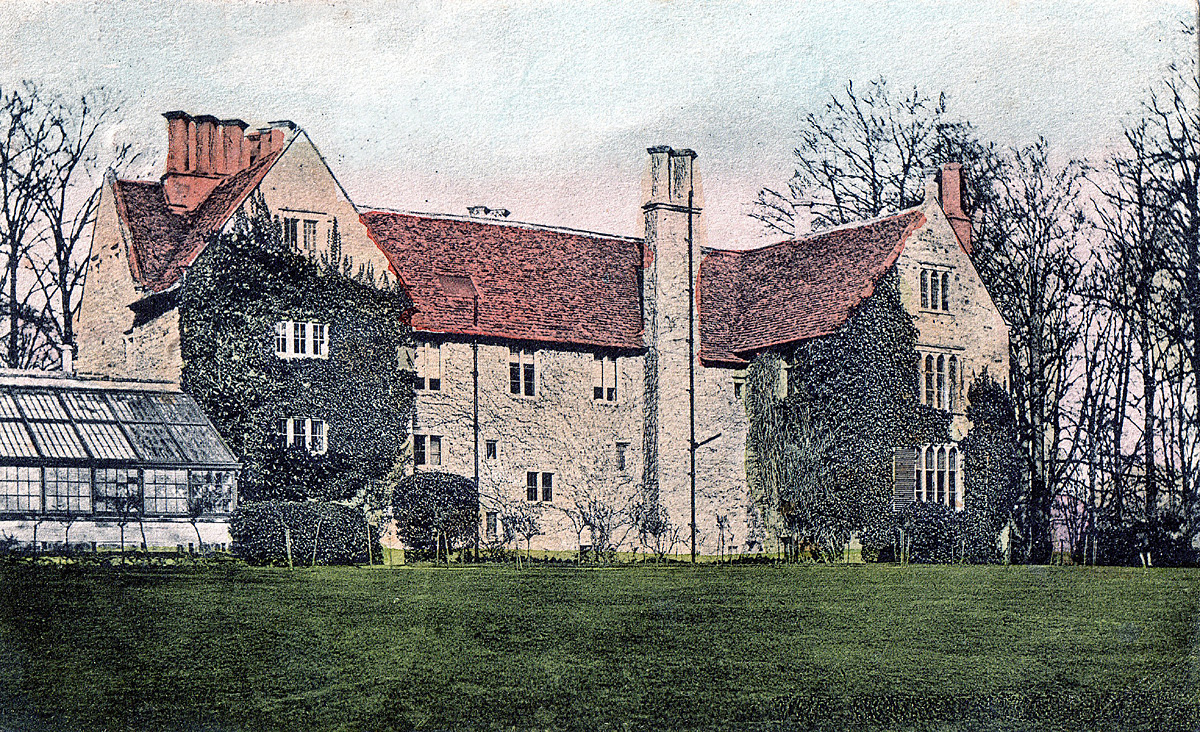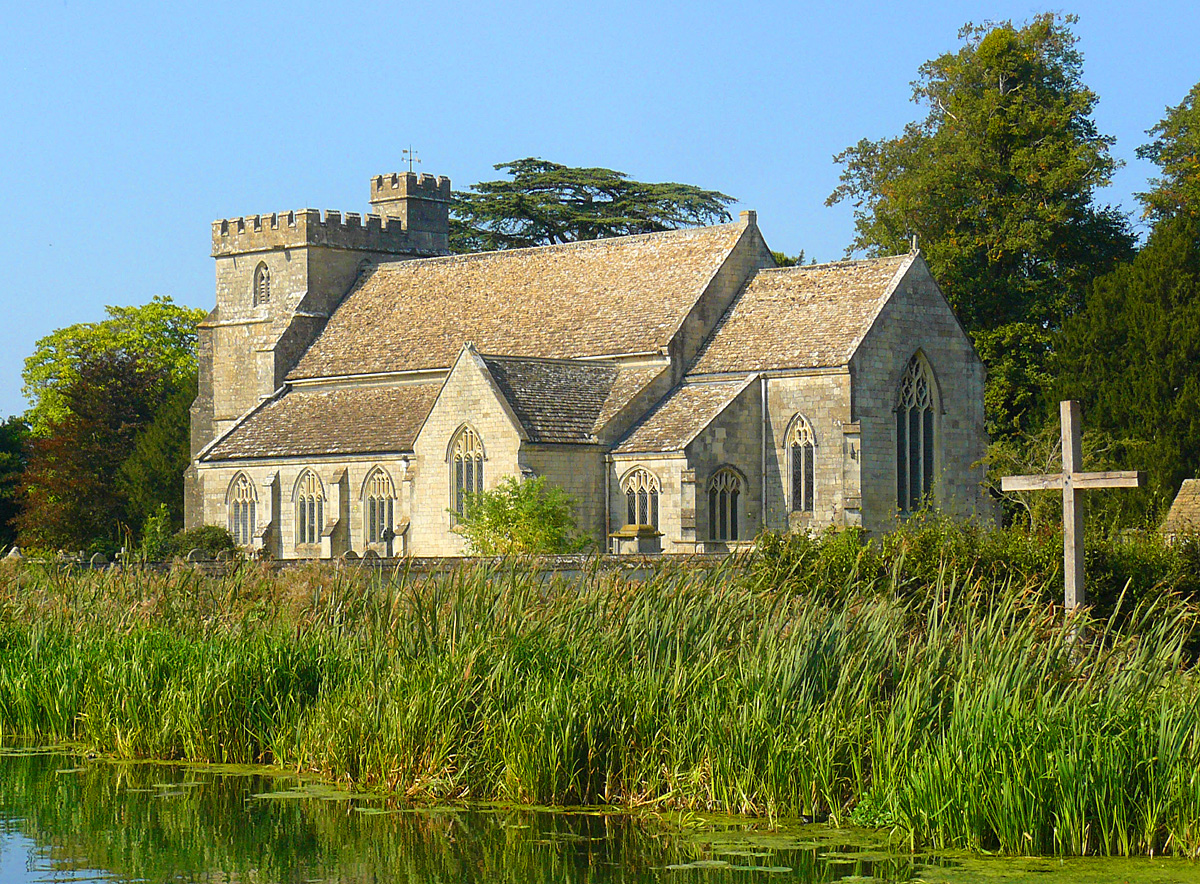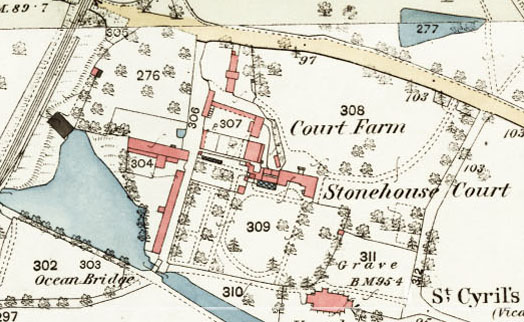The buildings of Stonehouse Court, church and farm provide added interest to this length of the towpath. (For sources, see bottom of page.)


This grand Elizabethan manor house was mainly lived in by families associated with the local woollen cloth industry - either through active involvement or inherited wealth. A new central oriel window was added in 1906, and the interior had to be reconstructed after a major fire in 1908.
One former resident was not popular when the building became a hotel in the 1980s and the management planned to build additional rooms in a west wing. It was found that the site of the extension included a medieval gravestone that was said to mark the burial of a favourite horse. The solution was to arch the new wing over the gravestone - as visitors can see today.


The tower of the church is medieval, but the main structure is largely a rebuilding in the 1850s. The saint's name is not well known, and it was evidently not known by a later vicar. He told everyone that the name was really St Cyril, and this appears on c1880s Ordnance Survey maps.
When the canal was built, it came closer to the church than had originally been planned, and the Company had to buy part of the churchyard. Initially the vicar demanded that other land be made available to him, but later he settled for a cash payment. After the canal was fully open, the vicar complained that water was leaking into the graves, and the Company had to install a drain to take the water away. The old part of the graveyard includes many monuments to those who prospered during the boom years of the local woollen cloth industry.


The original home farm north-west of the Court was subject to significant developments in the nineteenth century. A striking cart shed with granary over was built to the west and a long cowshed to the south - both now converted to housing overlooking the Ocean.
The location of the farm so close to the canal did lead to the Stroudwater Committee having to raise occasional issues with the farmer. These included a request to stop depositing rubbish in the water, to repair the bank where it had been damaged by pigs and to stop liquid manure leaking from the cow sheds. In 1874, the farmer was reported for washing his sheep in the Ocean without payment, but the Committee agreed to turn a blind eye as he gave 'some facilities for landing coals and other goods on his land near the swing bridge'. The location was referred to in early traffic records as Stonehouse Farm.
The fine view from the towpath opposite Stonehouse Court includes the remnants of a plantation of willow trees beside the River Frome that were destined for made into cricket bats. The venture was set up in the 1920s by Arthur Winterbotham, a local businessman and keen cricketer who lived in Stonehouse Court. The site still has a network of concrete irrigation channels and sluices to distribute water from the river.
Origin of the medieval gravestone from Proc Cots Nat Field Club V (1869) p39-45.
Horse burial story attributed to Caroline Winterbotham (Stonehouse History Group)
For more about Stonehouse Court, visit stonehousehistorygroup.org.uk/stonehouse-court-timeline.
Buying part of the graveyard from minutes D1180/1/1, 5 Mar, 13 Aug 1778.
Water leaking into the graves from minutes D1180/1/2 3 Feb 1785.
For more about St Cyr's church, see Stonehouse History Group Journal Issue 7, Sep 2017.
Depositing refuse in the water from letter D1180/9/4 p124.
Damage to the canal bank from letter D1180/9/10 p652.
Leakage of liquid manure from letter D1180/9/11 p41.
Washing sheep in the Ocean from minutes D1180/1/6 p157.
For more about the willow plantation, see GSIA Journal for 2009 pages 3-8.